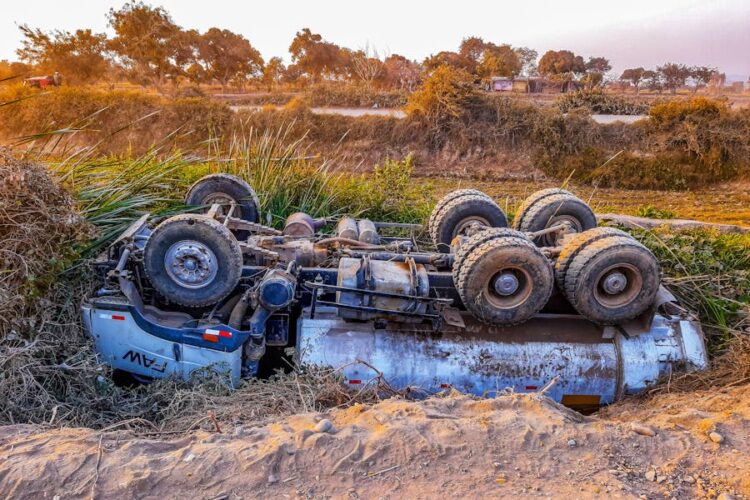Delivering mail to a doorstep was always common, but now, as packages become bigger, so do the vehicles transporting them. Delivery truck accidents can have devastating consequences, with over 4,800 fatalities and 140,000 injuries occurring annually across the US. In Indiana, nearly 200 people are killed or injured in crashes involving large trucks each year. Understanding liability is crucial to seeking justice, but who’s responsible? Let’s break it down.
Delivery trucks have made an indispensable contribution to today’s logistics, offering more timely delivery of goods than could be achieved on, say, a horse wagon. But the influx of these vehicles means that accidents have increased. All the parties involved, from drivers, carriers, and receivers to consumers, must know who is responsible for delivery truck accidents. This will give you a good idea of what liability comes into play in such an unfortunate event and make a clear sense of it — even though it is a complicated subject. The first step would be to speak to the best lawyer for delivery truck accidents in Indiana
Causes of Delivery Truck Accidents
Various factors can cause delivery truck accidents. Delivery truck accidents may occur for a number of reasons, from driver fatigue to mechanical problems. Adverse weather, overloaded vehicles, and lack of training are other common causes. Since every factor is important when determining liability, scrutinizing your own accident in relation to each distinctive detail is crucial.
Driver Responsibility
Drivers play the most critical role in ensuring road safety. Accidents are often caused by negligent behaviors such as distracted driving, speeding, or drunk driving. If a driver is found to be at least 51% responsible for an accident, they can be held fully accountable. However, proving negligence can be complex, often requiring the review of traffic camera footage, witness statements, or the driver’s logbooks.
Employer Accountability
When can employers be liable for delivery truck accidents? It is also important for delivery service companies to train drivers and follow safety regulations. In cases where an employer does not do so properly or where drivers are held to impossible schedules, the company can also be found at fault. It is called vicarious liability and it says an employer can be held liable for the acts of employees who are on company business.
Vehicle Maintenance and Manufacturer Liability
Aside from harsh weather, another critical element is mechanical failure. Delivery trucks have some of the most wear and tear which is why regular maintenance is a must. If a mechanical issue causes an accident, the company maintaining that vehicle may be at fault. Compounding that, if a less-obvious defect in the design or manufacturing of a truck is found, the manufacturer could likely be liable.
Third-Party Involvement
Delivery truck accidents can involve third parties. For example, if a delivery driver swerves to avoid another vehicle and crashes, the responsible party is likely the other driver. Similarly, if road conditions contribute to the accident, the government agencies responsible for road maintenance could be held liable. Each case requires an independent and thorough analysis to determine the extent of third-party involvement.
Insurance Coverage and Claims
Knowing who to turn to for coverage in delivery truck accident liability is important. Drivers and companies both have insurance for this purpose in most cases. Insurance claims are a headache, especially when there are multiple parties involved. Policy specifics and how the claims process helps those who have been affected are crucial when it comes to getting fair compensation.
Litigation and Other Commitments
If there is disagreement about who is at fault, court proceedings may have to be brought to determine liability. In fact, courts review all available evidence, such as accident reports, witness interviews, and expert analysis to apportion fault. Settlements frequently take place out of court to prevent protracted litigation. Such settlements need negotiations among the responsible parties on payment.
Prevention Strategies
It is better to avoid delivery truck accidents than to worry about liability later. However, companies should also invest in robust driver training programs and rigorously enforce maintenance schedules. In addition, some advanced safety technologies, like collision avoidance systems and telematics, can help minimize accident risk. Fostering a culture of safety in the workplace also supports safe driving and compliance with regulations.
Conclusion
Determining liability in delivery truck accidents involves multiple factors and parties. From driver negligence to employer accountability and third-party involvement, each element plays a crucial role. Understanding these aspects helps individuals navigate the complexities of such accidents and seek fair compensation. Emphasizing prevention through proper training, maintenance, and safety technologies can significantly reduce the incidence of these unfortunate events. By fostering a culture of responsibility and safety, the roads can become safer for everyone.










